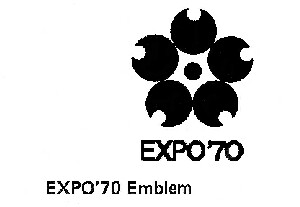|
1 |
 Copyright: |
|
1 |
 Copyright: |
As air traffic increased and the development of modern day communications media advanced there was increasingly seen to be a need after 1950 to modify the meaning and approach of Universal World Expositions. In an age in which information was becoming more easily accessible on a global scale, a universal exhibition as a pure showcase for products and national developments no longer balanced with the demands of the public. It was felt that the swing should be towards presenting achievements and cultures in a common context in order to open up and discuss questions of international interest.
The theme of the exhibition, Progress and Harmony for Mankind, like Brussels in 1958 and Montreal in 1967 before it, was to demonstrate a critical approach to the consequences of the ideology of progress. Reference was made to the negative social repercussions of industrialisation, with the Second World War as an example of the destructive use of scientific know-how, and the steady and unending destruction of the environment in the backwash of pervasive mechanisation. Modern developments were no longer to serve as the platform for economic or political competition but provide the possibility of improving the quality of life of all mankind and hence create a foundation for peace throughout the world.
As the visual symbol of this aspiration, an abstract cherry blossom (based on ideas put forward by Takeshi Ohtaka), was chosen as the symbol of deepest harmony. Five blossom petals, representing the five continents, are arranged around the centre of the flower, i.e. Japan as the point of meeting. The white zone around the centre created by the regular grouping of the circles, symbolised the common space for progress generated by meeting at the World Exposition. The EXPO ´70 logo also provided the layout of the Japanese government pavilion. Unfortunately, its construction in three dimensions, according to one contemporary critic, actually had more in common five giant oil tanks than a delicate cherry blossom.
Progress as the positively regarded foundation for development through to a golden age of humanity did, however, according to the organiser, have to be looked on in a critical light because of past experience and be promoted under new, more future-oriented signs. To create a framework basis for this proposed change of consciousness, it was proposed that the exposition in Osaka should have four theme circles or blocks to act as focuses for all scientific or technological processes, and hopefully inspire participants at the Exposition to come up with new ideas.
In order to reconcile harmony with progress, the theme of "towards greater joy of life" was marked as having the key role. Respect for individual life and equality of all people was understood to be the principle of sciences such as anthropology and psychology as well as for concepts in education and training policies for leisure and for sport. The relationship between humankind and nature was dealt with in the second theme block "towards better use of nature". The fight against the destruction of the environment and the resulting risks for future generations was to play a central role in the researching of nature and its resources for humankind. And again, the third sector, "towards better organisation of life" was closely related to technological developments. From clothing to nutrition, architecture, modes of transport, city and area planning, tools and machines through to the better use of time - the scope of the sector covered the material aspects determining the quality of life. The fourth theme "towards enhanced mutual understanding" was dedicated to the forms and means of communication. Spoken and written language, technical systems for information transfer, mass media, social establishments, art and theatre, international cooperation and cultural exchange were presented in this context.
| Year: 1970 | City: Osaka | Country: Japan |
| Duration: 5 March - 13 September 1970 | ||